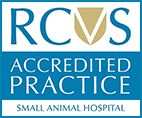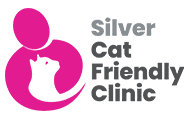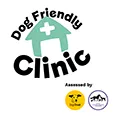It's a time we all dread although we've always known the day would come.
For a pet owner, approaching the end of your dear friend's life is not something that we like to contemplate. We've found that having a better understanding of the procedure and the options available can help make this difficult time easier.
In an ideal world and obviously if you have time, it can be a less upsetting to plan your pet’s end-of-life care, this takes away any rushed decisions during a very emotional time, when you may forget to ask something or you may wish you had done something differently. It isn't always possible but planning ahead allows you to consider the options and what you’d really like to do, this can affect how your experience is remembered. It's not always something we want to be thinking about, but with a little forward thinking, it can help you be prepared for when the time does come and you can be assured your desires are met.
Making the appointment
We know that everyone's experience is different and therefore we do our best to be flexible and adapt to suit your preferences for your individual experience.
When?
We suggest choosing a time of day that is quieter, for example the beginning or end of consult periods. When you arrive at the practice, if there are other people in reception, the reception staff will offer a quiet waiting room if there is one available.
If you do not wish to come into the reception, you can come through a rear entrance with the assistance of a member of staff. (Please speak to the reception team when arranging your appointment for arrangements to be made.)
Home visits
For many pet owners, having their pet put to sleep at home can be less stressful.
We will always do our best to arrange home visits upon request, these are best planned in advance to allow us to work around consultation periods and ensure there is vet cover at the practice. If we are unable to provide vet cover at the practice and in the case of emergencies you may be asked to come to the practice if a home visit isn't suitable.
The process
Understanding the procedure itself can help to make it easier to come to terms with.
The vet will ask you whether you wish to remain in the room during the procedure, this is very much a personal decision and there is no obligation to stay if you do not wish to. Some owners will choose to leave and come back in afterwards to say goodbye, we recommend taking some time before the procedure to consider what you would like to do.
The staff will ask you to sign a consent form before the procedure, this may be the last thing on your mind at the time but it's important that you understand and read what you are giving consent to.
The vet will be assisted by a veterinary nurse who will help the vet raise the vein for the injection and assist with holding your pet. An intravenous cannula (a hollow needle inserted into the vein and secured using dressing tape) is sometimes used to make the injection easier more peaceful for your pet. This involves a small area of fur being clipped on their leg, allowing the vet to more clearly see the vein.
The euthanasia solution is a concentrated overdose of anaesthetic, when given the pet peacefully falls asleep and then pass away, usually in under a minute. The process is painless and peaceful, there may be a small scratch from the needle, but this is no more than when we have blood tests or injections ourselves.
The vet will ask you if you'd like to hold your pet or stroke them during the final moments.
Once your pet has passed, the vet will confirm that they have passed by checking their heart with a stethoscope.
Afterwards
After your pet has passed, it is perfectly normal for their body to have muscle contractions. This can be un-settling for owners who aren't prepared for them, as it can appear that your pet is still alive. It is even normal for your pet to gasp or suddenly have a deep breath, but these are post-death bodily reflexes and your pet will have already passed. Many pets defecate after they have passed and some may pass without closing their eyes.
We will always offer you the opportunity to spend time with your pet afterwards; however there may be limits due to consultation room availability. If you would prefer to spend longer with your pet afterwards we can make special arrangements at the time of booking, but please let us know in advance so that we can plan accordingly.
It's common for owners to want a lock of hair or their pet's collar as a keepsake, if you would like us to do this for you please don't hesitate to ask.
Whilst the option is there, you don't need to stay afterwards if you don't want to. Some owners prefer to leave the practice as soon as possible, this is perfectly normal and we understand that it's a very personal experience. If you can't face reception, ask the staff and we can arrange for you to leave via an alternative exit.
Cremation
We work with a wonderful crematorium called Limekiln Farm in Gloucester, they have been used by us for many years and Mr Fisher has visited them on several occasions to meet their staff and tour their premises. Some owners worry about their pet's dignity post death and you can rest assured knowing that we trust them to care for our own pets and have nothing but positive things to say about their respect and understanding during this difficult stage.
After you leave, your pet will gently be wrapped and taken to our cold storage area for a very short period before being cremated. If you have had a home visit, the staff will bring your pet's body back to the practice for you.
There are two options available for cremation - a standard cremation will involve your pet's cremation without the return of their ashes. Or you may choose an individual cremation, which includes your pet's individual cremation and collection of ashes, which will be returned to you in a wooden casket. The vet will discuss these options with you and advise of the relevant charges.
The Client Care team will contact you when your pet's ashes are returned to us so that you can arrange to come in to collect them.
Taking your pet home
If you have chosen to take your pet home for burial, we recommend that your pet is placed in a curled position to make burial in a grave easier for you. This is best done shortly after they pass, before rigor mortis begins (around 3 hours afterwards) the vet and nurse will be happy to help you with this.
If your pets death is sudden
Most pet owners would like the option to choose the time and circumstances around their pet's death, but sadly this isn't always possible if they suddenly become unwell.
We will always work to provide you with as much time and preparation as possible and will discuss the stages above in as much detail as we can. Some owners find it difficult to make decisions about their pet's after-life care during this time, which is why it's a good idea to think about the options in advance.
If your pet dies at home
When your pet passes away at home it can take away the need for making a difficult decision, but it can also leave you feeling unsure of what to do next. Often your pet will have been receiving care for an ongoing health problem, but sometimes death can be unexpected and come as a shock to owners.
We are always happy to talk it through with you, if you aren't sure why your pet may have passed and wish to know more we can perform autopsies at the practice. It is best to discuss this by calling us to decide if this is a suitable option for your pet.
Cremation is available to pets that have passed at home. You will need to bring them in to us, it's often best to call before hand so that we can assist you with entry via a different entrance or advice on how and when to bring them in.
Support
If you have any questions, our staff are always happy to discuss the process with you and advise you through this difficult time. We are also here for you afterwards, should you need an ear to listen or a shoulder to cry on we are always happy to help.








